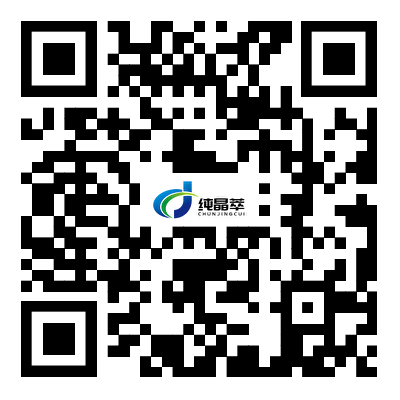Market Prospects and Application Fields of OLED Materials
Category: Latest News
Published Time: 2025-05-07
Summary: The OLED material market has broad prospects
Market Prospects
The OLED material market has broad prospects, with the following growth trends and driving factors:
Significant market growth: According to Omdia, the OLED material market has resumed growth after experiencing fluctuations. Annual revenue in 2024 (excluding dopant revenue) is expected to exceed US$2 billion, reaching US$2.6 billion by 2028. IMARC Group data shows that the global OLED material market size reached US$29.7 billion in 2024 and is expected to reach US$140.1 billion by 2033, with a compound annual growth rate of 18.8% from 2025 to 2033.
Demand driven by the display industry: In the smartphone sector, the usage rate of OLED display technology continues to increase, approaching 60%, and with the increasing demand for diversified scenarios such as foldable screen phones, it has become the mainstream display technology. The number of products using OLED display technology is also rapidly increasing in the fields of laptop and desktop computer monitors. At the same time, the application of OLED in the television field is constantly expanding, and the high-end television market continues to have a demand for OLED TVs.
Expansion into emerging application areas: The application of OLED technology in emerging fields such as smart lighting, photomedicine, and wearable devices is gradually emerging. For example, in the field of smart lighting, OLED digital taillights have been applied to many vehicle models; in the field of photomedicine, OLED light sources are soft, surface-emitting, and have high light uniformity, and can be made into ultra-thin flexible forms for use in treatments such as skin tissue regeneration; in the field of wearable devices, OLED does not generate heat when lit for a long time, the temperature is close to human body temperature, and the interactive experience is good, and it can be integrated into smart clothing, jewelry, and other products.
Accelerated domestication process: Major mainland Chinese panel manufacturers are rapidly expanding production, and the production capacity of OLED panel manufacturers led by BOE is continuously being released. At the same time, the domestic OLED material market is rapidly expanding, and the space for domestic substitution is vast. With the improvement of the technical level of domestic enterprises, it is expected to occupy a larger share in the global OLED material market.
Application Areas
Display Area
Smartphones: One of the most important application areas of OLED display technology, it can achieve thin and light design, better HDR effects, high contrast, fast response, and flexible display, meeting consumers' high requirements for mobile phone display quality and appearance design.
Televisions: OLED TVs have advantages such as self-emission, wide viewing angle, and high color reproduction, providing an excellent visual experience and having strong competitiveness in the high-end TV market.
Laptops and Tablets: More and more brands are adopting OLED display technology to improve product display performance and appearance texture, bringing users a better visual experience.
VR/AR Devices: The branch of OLED display technology, Micro OLED (silicon-based OLED), has gradually become the preferred screen technology for near-eye display products such as AR, VR, and MR, because of its high resolution and fast response characteristics, it can provide users with an immersive virtual experience.
In-vehicle Displays: Used in car dashboards, central control screens, rearview mirrors, etc., OLED display technology has advantages such as high contrast, wide viewing angle, and low power consumption, and can provide clear display effects under different lighting conditions, while also achieving flexible design to meet the personalized needs of car interiors.
Lighting Area
General Lighting: Can be used in various indoor and outdoor lighting scenarios, such as chandeliers, wall lamps, table lamps, etc., with advantages such as high luminous efficiency, soft light, and rich colors, creating a comfortable lighting environment.
Special Lighting: In some special places, such as museums, galleries, and hospitals, OLED lighting can provide high-quality lighting effects to protect exhibits or patients' eyes. In addition, OLED lighting can also be used in car taillights and headlights to achieve unique designs and functions.
Photomedicine: By adjusting the structure of OLED organic light-emitting materials, near-infrared light emission and deep blue light can be achieved, providing more possibilities for the treatment of different diseases. Compared with traditional photomedical devices, OLED light sources are soft, surface-emitting, and have high light uniformity, and can be made into ultra-thin flexible forms, providing patients with better comfort and experience. Currently, there are OLED medical patches used in treatments such as skin tissue regeneration.
Wearable Devices: Because OLED does not generate heat when lit for a long time, and the temperature is closer to human body temperature, it can bring people a better interactive experience, so it can be easily integrated into various wearable products, such as smart clothing and jewelry. In the future, OLED luminous fabrics are expected to be integrated into all aspects of daily life.
Keywords: Market Prospects and Application Fields of OLED Materials
Related News
Company News
-
How to improve the synthesis efficiency of OLED optoelectronic material intermediates?
Time:2025-05-08
-
R&D and production of customized chemicals for OLED electronic materials
Time:2025-05-07
-
What are the advantages of using 2-methoxycarbazole in OLED materials?
Time:2025-05-08
-
What production equipment is needed to produce OLED materials?
Time:2025-05-07
-
How can customized chemicals achieve precise performance control of OLED materials?
Time:2025-05-07
Latest News
-
What are the reasons for catalyst deactivation during the reaction process?
Time:2025-05-08
-
How to improve the synthesis efficiency of OLED optoelectronic material intermediates by optimizing catalyst performance
Time:2025-05-08
-
What factors affect the yield of OLED optoelectronic material intermediates?
Time:2025-05-08
-
How to control the cost of products when customizing chemicals
Time:2025-05-08
-
Market Prospects and Application Fields of OLED Materials
Time:2025-05-07

